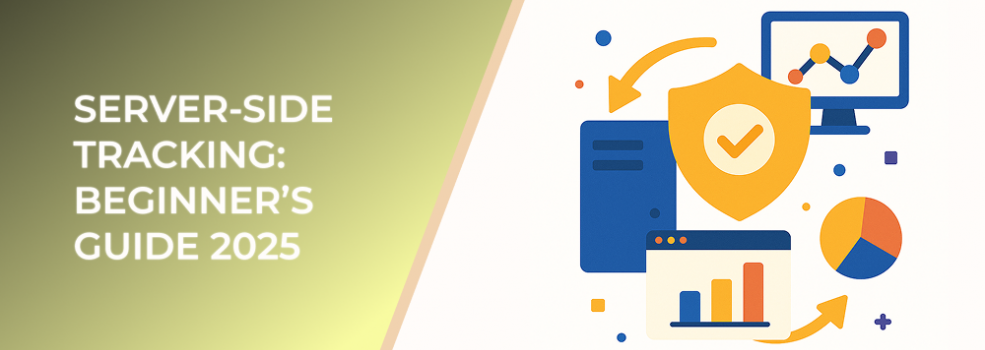As privacy regulations tighten and browser-based tracking continues to lose reliability, server-side tracking has quickly moved from an advanced technique to a marketing essential. In 2025, it is one of the most effective ways to preserve data accuracy, maintain attribution clarity, and reduce performance losses caused by client-side restrictions.
This guide explains the basics of server-side tracking, how it works behind the scenes, and why businesses are increasingly adopting it.
What Is Server-Side Tracking?
Server-side tracking is a method of collecting, processing, and sending user data through a secure server instead of the user’s browser. Rather than relying on JavaScript tags executed on a webpage, a server processes the data and forwards it to analytics and advertising platforms.
This approach ensures that tracking remains functional even when browsers block third-party cookies or limit client-side scripts.
Why Server-Side Tracking Matters in 2025
1. Loss of Client-Side Data
Modern browsers block up to 80% of third-party cookies, and some studies show that ad blockers disrupt as much as 42% of client-side tracking scripts.
2. Improved Data Accuracy
Server-side tracking reduces discrepancies caused by browser limits, disabled JavaScript, and network interruptions. Marketers adopting this method report up to 28% improvements in event accuracy.
3. Better Attribution
Server-side systems provide cleaner, more complete event data. This improves attribution models and reduces the gaps commonly seen in client-side tracking.
4. Enhanced Security
Because data passes through a controlled server, businesses gain better control over what information is collected and shared.
5. Faster Page Performance
Moving scripts off the user's device reduces page load times. Websites using server-side setups see average load time improvements of 20–35%.
How Server-Side Tracking Works
-
A user interacts with a webpage or app.
-
Instead of firing tracking scripts in the browser, events are sent to a secure server.
-
The server validates, structures, and enriches the data.
-
The server forwards the event information to analytics or advertising platforms.
This creates cleaner, more reliable data pipelines.
Benefits of Server-Side Tracking
1. Consistent Tracking
Data remains intact even when users block scripts or browse in privacy mode.
2. More Control Over Data
Marketers can filter, transform, or anonymize data before sending it to platforms.
3. Compatibility With Modern Privacy Standards
Server-side setups help businesses meet global data protection requirements by controlling how information is stored and transmitted.
4. Higher Event Delivery Rates
Platforms report significantly higher event match rates when fed with server-side data. In some cases, conversion tracking accuracy increases by over 30%.
Challenges to Consider
1. Technical Setup
Server-side tracking is more complex and often requires assistance from developers.
2. Additional Costs
Servers and maintenance add costs that client-side tracking does not.
3. Ongoing Monitoring
Server-side systems require continuous oversight to ensure accurate event forwarding and schema alignment.
Best Practices for 2025
1. Prioritize High-Value Events
Focus server-side tracking on conversions, purchases, form submissions, and key funnel actions.
2. Implement Data Validation Rules
Ensure that events meet your required format before sending them to external platforms.
3. Combine Server-Side and Client-Side Tracking
Hybrid setups provide both breadth and precision while minimizing data loss.
4. Test Regularly
Check for missing events, incorrect parameters, and performance delays.
5. Use Secure Transfer Protocols
All server-to-platform communication should be encrypted.
Useful Statistics
-
Websites adopting server-side tracking report up to 40% better consistency between analytics and ad platform data.
-
Browser-based data loss has increased to nearly 50% across major regions.
-
Event match rates improve by an average of 22% when switching to server-side forwarding.
Conclusion
Server-side tracking has become indispensable in 2025. As client-side methods continue to decline in accuracy and reliability, server-side solutions offer a stable and privacy-compliant path forward. Marketers who adopt this approach gain stronger data integrity, improved campaign attribution, and long-term resilience in a changing digital landscape.

